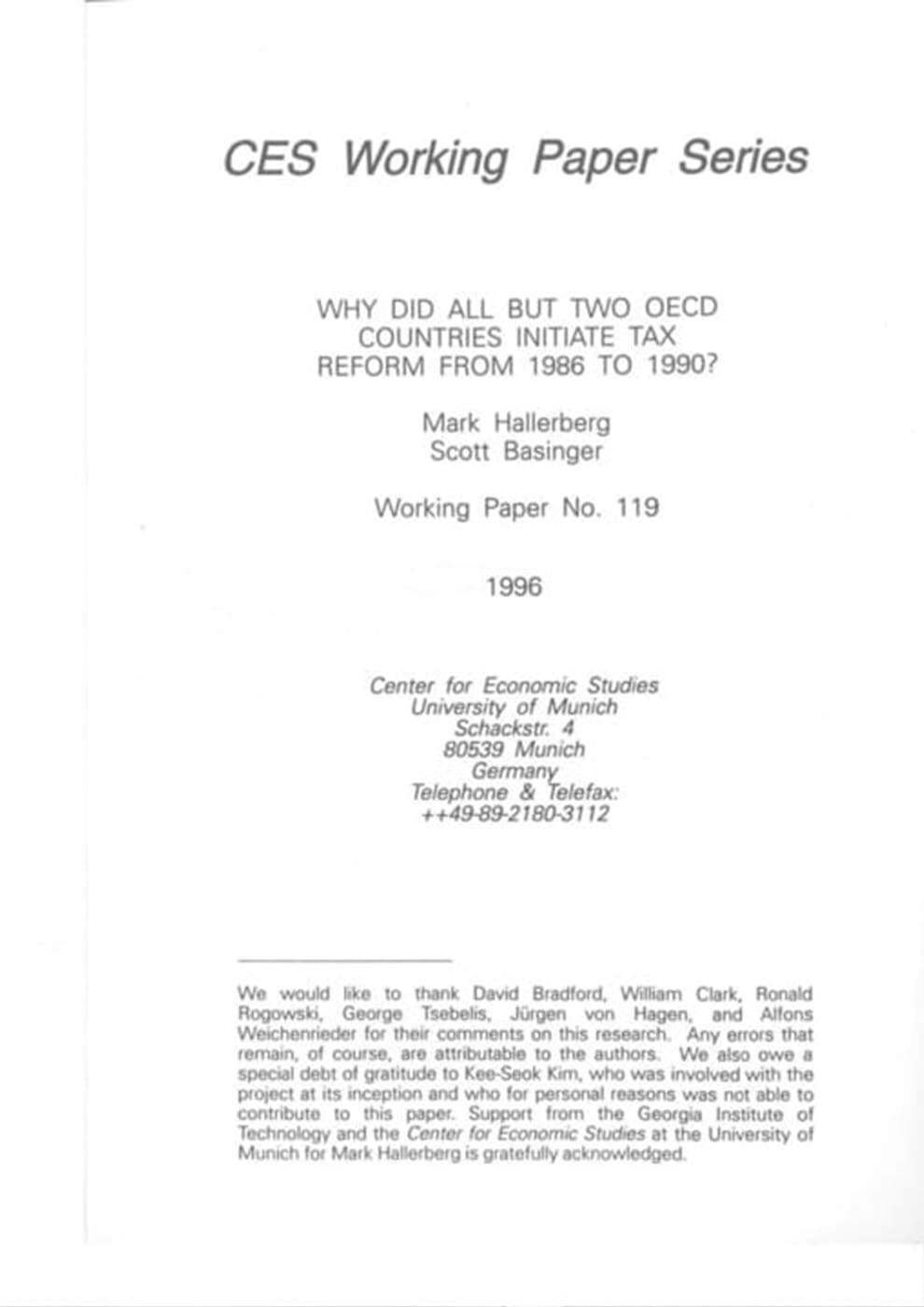Why Did All but Two OECD Countries Initiate Tax Reform from 1986 to 1990?
CES, Munich, 1996
CES Working Paper No. 119

This paper examines the role that economic and political factors played in tax reform in OECD countries from 1986 to 1990. Some writers argue that economic integration forced states to reform their tax systems. We examine this argument and consider the relevance of other possible factors, such as inflation and growth rates, the partisanship of the government, and the number of "veto players" in accounting for changes in the statutory corporate and top income tax rate. Our findings indicate that capital in particular was quite mobile by 1986, at least mobile enough so that governments were forced to respond to the initial tax cut in the United States. At the same time, a government's ability to respond to these pressures depended critically on the number of institutional players which were required to approve any change in policy. Even when one of the respective players in the domestic arena presumably wanted to move forward with significant cuts in marginal tax rates, in cases where it had to win approval for its proposal from other veto players it had to make compromises which inevitably reduced the reform's scope. This analysis has some interesting implications for the dynamics of tax competition. Several scholars worry that unfettered competition among states will drive taxes on capital and mobile labor down to zero. States with more veto players may find themselves unable, at least in the short run, to retaliate against cuts in other places with a 'defection' of their own.